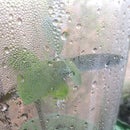Introduction: Quick and Easy Hat Stretcher
My name is Ol Tusker and I have a hat problem. I've gone three months now without acquiring a new hat. Admittedly, I haven't disposed of any either, but let's not get into that. Let's instead talk about making some of the hats I have actually fit the large knot on top of my shoulders. My head diameter is approximately 24", which equates to a hat size between 7 5/8 and 7 3/4. Over the years, I've collected a few awesome hats that were close, and some not-so-close, to actually fitting comfortably. This I'ble sets out to show how I'm going to solve that problem (the fitment one, not the "I've got too many hats" one...)
Step 1: Parts Needed...
I'm cheap. Maybe another problem (you guys don't bother keeping track...), but I like coming up with DIY solutions to everyday problems. Buying stuff gives me a momentary rush, then brings on a bit of remorse if I realize I could have made it as good or better myself. On to the project before I opine again...
These items I had lazing around the shop waiting for me to put them to use:
- a smallish, cheap quick clamp that can be reversed to a spreader
- a short piece of 4" Schedule 40 PVC (about 4-5 inches long)
- 2 small wood screws
Tools I used:
- a miter saw, but any saw that can cut PVC would work
- a drill with appropriately sized bit
- about 10 minutes of free time to actually make the stretcher
Step 2: Cutting the PVC
I began this project with a short piece of PVC. I didn't measure it to start with, but I suppose you need to make it short enough to fit your miter saw if you are using one. Without saying (yet I'm saying it), use extreme caution when working this close to rapidly rotating blades, lest you need to invent a glove shortener to go with your hat stretcher.
Split the PVC into two halves as shown in the second photo. The third photo shows that I should have measured one of my hats before I got started, as I had to shorten the pieces to fit the spreader into the hat as far as I wished to. Another trip to the saw to tempt fate followed to get the pieces shown in photo 4.
Step 3: You Are Done! (unless You're Me, Then You're Not...)
If you really want quick and easy, you could stop here. It takes a small bit of positioning to get the PVC to sit where you want in some hats while you begin expanding the spreader. I decided to take the 8 minutes I had left from my 10 minutes of free time and fix the PVC to the clamp faces. I drilled and countersunk a hole in the center of each piece of PVC and pilot holes in the clamp faces after I removed the rubber surface protectors. A wood screw holds the PVC nicely for easy one hand positioning in your hat while you adjust the spreader to the tension needed.
Step 4: Success! (mostly...)
So far, I've stretched three hats. One was a wool fedora from Pendleton that belonged to a great uncle that sat awkwardly on top of my head instead of on it. It's labeled 7 3/8 and now is easily a 7 5/8. I believe I can get more on it, but haven't wanted to stress it any more than I need to.
I tried stretching a leather outback-type hat that my brother left damp in a hot vehicle and shrunk. The hat fits again, but the brim has a large wave in it that may take another type device to remedy.
I hope you have luck with this if you try it. The PVC can easily be removed and the rubber protectors reinstalled on the clamp if you need it for a, I dunno, a clamp...
Now, where are those other hats I put away...

Participated in the
MacGyver Challenge











